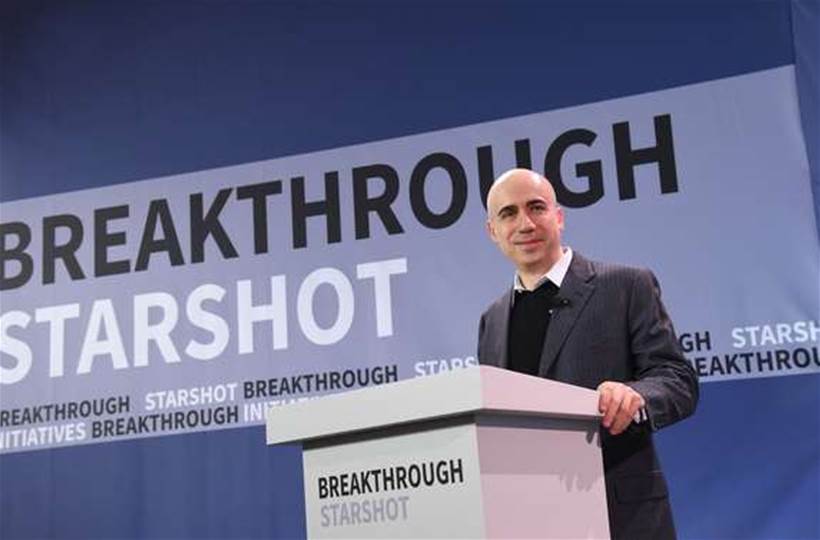Entrepreneur Yuri Milner has revealed a $130 million (US$100 million) project to send thousands of “nano” spacecraft to the Alpha Centauri star system 4.37 light years away to search for life.
The Breakthrough Starshot project aims to create a proof-of-concept for “light-propelled nanocrafts” that each weigh and cost about as much as an iPhone and can fly at 20 percent of light speed.
It will be led by Pete Worden, the former director of NASA AMES Research Center, and advised by a committee of world-class scientists and engineers.
The project will also be overseen by a board consisting of cosmologist Stephen Hawking, internet entrepreneur Yuri Milner, and Facebook’s Mark Zuckerberg.
Astronomers estimate that there is a “reasonable chance” of an Earth-like planet existing in the 'habitable zones' of Alpha Centauri's three-star system.
"Earth is a wonderful place, but it might not last forever," Stephen Hawking said.
"Sooner or later, we must look to the stars. Breakthrough Starshot is a very exciting first step on that journey."
The Alpha Centauri star system is 25 trillion miles (4.37 light years) away. “With today's fastest spacecraft, it would take about 30,000 years to get there,” the team behind the project said.
“Breakthrough Starshot aims to establish whether a gram-scale nanocraft, on a sail pushed by a light beam, can fly over a thousand times faster.
“It brings the Silicon Valley approach to space travel, capitalising on exponential advances in certain areas of technology since the beginning of the 21st century.”
Each nanocraft would consist of two main parts – a payload of microelectronic components that is being called a StarChip, and a “lightsail”.
Moore's law created the possibility of “a gram-scale wafer, carrying cameras, photon thrusters, power supply, navigation and communication equipment, and constituting a fully functional space probe”, the team said.
“The StarChip can be mass-produced at the cost of an iPhone and be sent on missions in large numbers to provide redundancy and coverage.”
The lightsail would take advantage of “thin and lightweight metamaterials, promising to enable the fabrication of meter-scale sails no more than a few hundred atoms thick and at gram-scale mass.”
The project would also need to build a ground-based kilometre-scale light beamer at high altitude that could potentially be scaled up to the 100 gigawatt level.
“The proposed light propulsion system is on a scale significantly exceeding any currently operational analog,” the team noted.
“The very nature of the project calls for global co-operation and support.”
A ‘mothership’ would be used to carry several thousand nanocraft at a time to a high-altitude orbit.
Once released from the mothership, the light beam would be focused on the nanocrafts’ lightsails “to accelerate individual craft to the target speed within minutes”.
The same light beamer that launched the nanocrafts would be used to receive data from them “over four years later”, the project team said.
It is believed that the light beamer will eventually create economies of scale that allow more nanocraft to be launched more frequently.
“Once it is assembled and the technology matures, the cost of each launch is expected to fall to a few hundred thousand dollars,” the team said.
The size of the Breakthrough Starshot program isn’t being underestimated – the “research and engineering phase is expected to last a number of years”, the team acknowledged.
“Following that, development of the ultimate mission to Alpha Centauri would require a budget comparable to the largest current scientific experiments,” it said.









